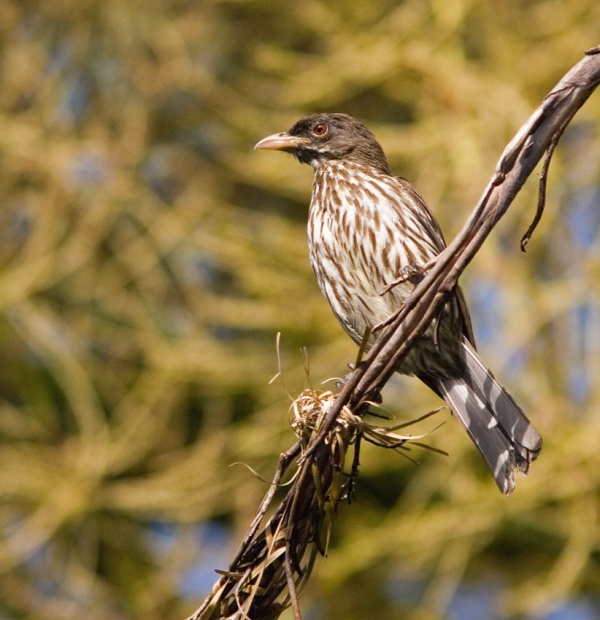Facts About Palmchat
The palmchat is a small songbird and the sole member of its genus, Dulus, and the family Dulidae. It shares a close relationship with waxwings and is often grouped with them due to its strong dependence on palm trees for feeding, roosting, and nesting. This bird has the distinction of being the national bird of the Dominican Republic.
First described by French zoologist Mathurin Jacques Brisson in 1760, the palmchat was later named Tanagra dominica by Carl Linnaeus in 1766. It stands alone as the single species in its genus.
In terms of appearance, palmchats measure about 20 cm in length, featuring olive-brown coloring on their upper parts and a cream-buff underside. They have striking russet eyes and strong yellow bills, though they lack the soft feathers typical of waxwings. These birds are native to the island of Hispaniola, covering both Haiti and the Dominican Republic, and are commonly found in areas with palm savannas or scattered trees.
Palmchats are known for their sociable nature, often seen in small flocks roosting closely together. They primarily breed from March to June, constructing large communal nests in the crowns of palm trees. These nests can be up to 2 meters wide and contain multiple adjoining chambers. Female palmchats typically lay between 2 to 4 spotted eggs. Their diet mainly consists of fruits, berries, and flowers, and they have a wide range of vocalizations used for social interactions.
Regarding conservation, the palmchat is widespread within its 75,000 km² range and is classified as Least Concern by the IUCN Red List, thanks to its stable population.

 Dominican Republic
Dominican Republic